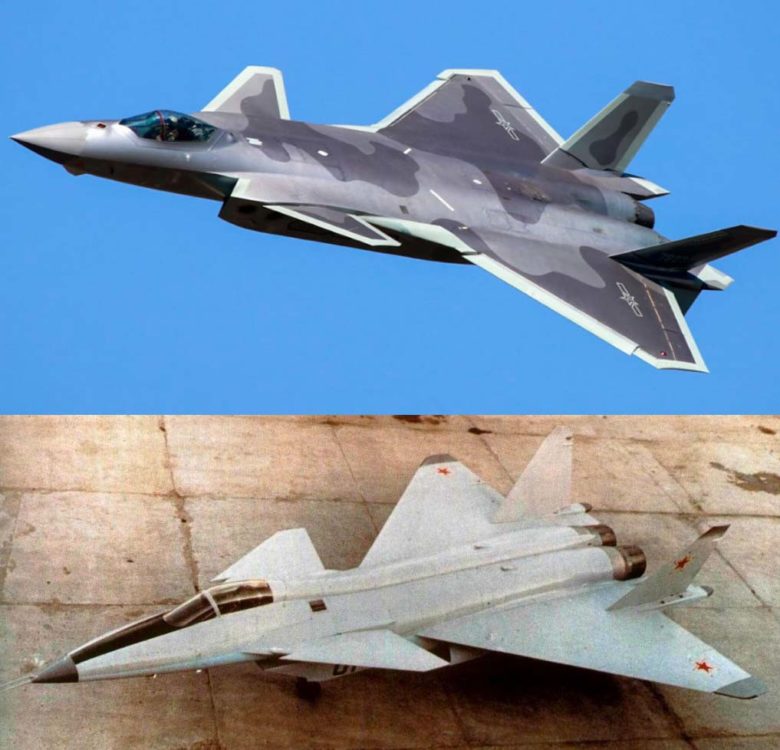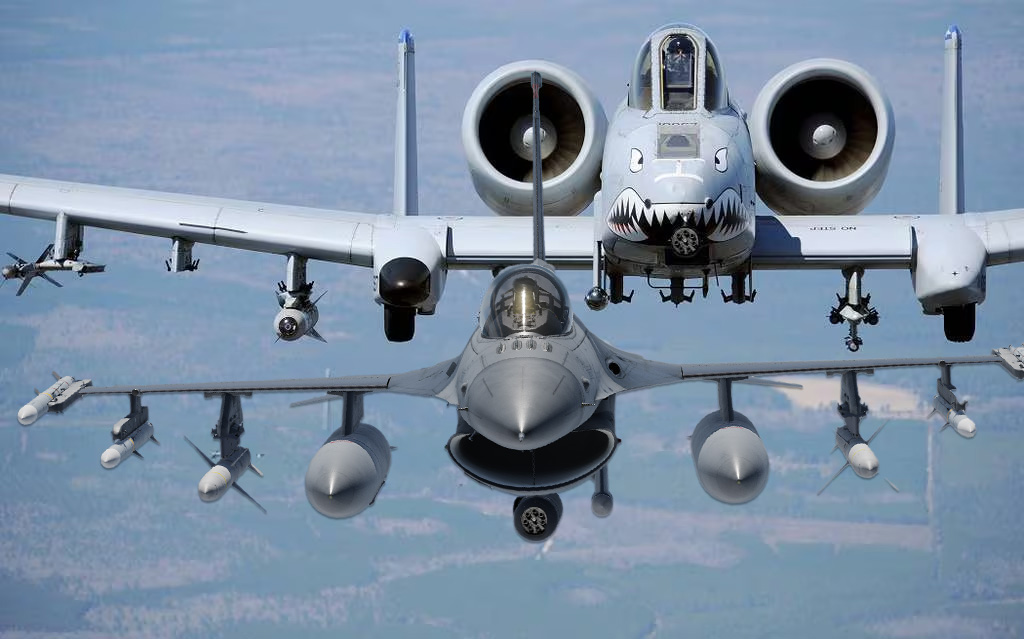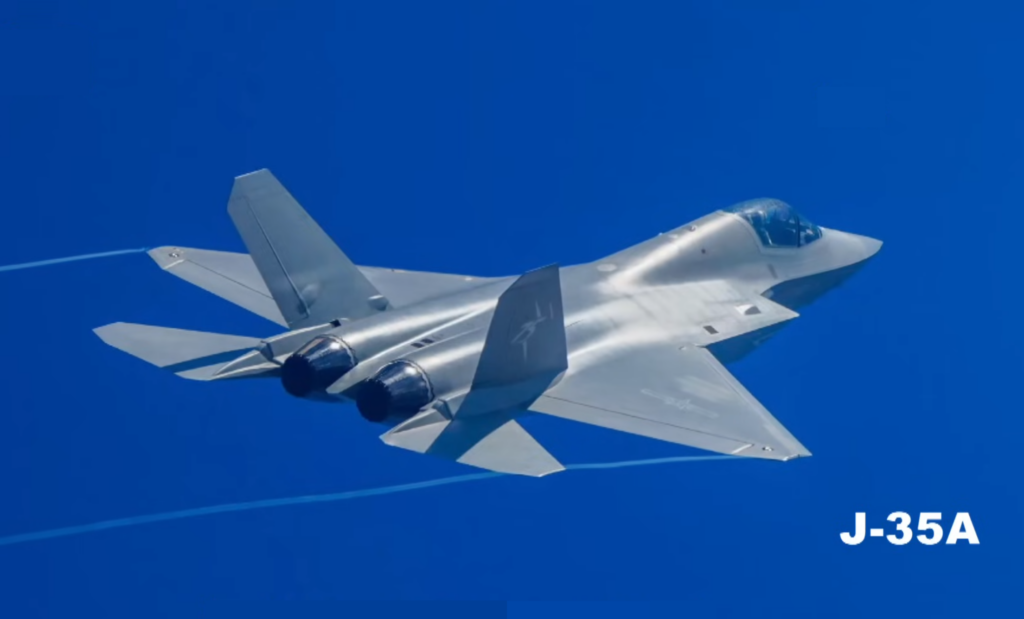Stolen stealth fighter: Why China’s J-20 has both US and Russian DNA
- By Alex Hollings
Share This Article

China has a long and established history of borrowing (or outright stealing) designs, technologies, and even entire aircraft from its competitors, and evidence suggests the nation’s premiere stealth fighter, the Chengdu J-20 Mighty Dragon, is no exception.
The J-20 was the world’s first non-American stealth platform to enter operational service, effectively ending Uncle Sam’s 34-year monopoly on low-observability that stretched all the way back to 1983. As the J-20 entered service, many within both the United States and Russia accused the People’s Republic of China of stealing their stealth fighter designs to hurry their own jet into service.
There is certainly evidence and historical precedent to back up these assertions, but the J-20 doesn’t look exactly like any other 5th-generation entry. That’s likely not because the J-20 is an entirely original design, however. It’s probably because the J-20 steals elements from at least three different fighter programs.
China’s history of stealing fighter designs

China’s rapid military expansion and modernization have come as a result of massive economic and political efforts. The nation’s military, once a sprawling mess of nepotism and corruption, has quickly become perhaps the dominant military force in the Pacific, with more than 770 vessels and a growing stockpile of highly capable missile systems, much of which is devoted to defending their claims of sovereignty over the entire South China Sea. This transition hasn’t been without its challenges, but there’s no denying that China has covered a great deal of proverbial ground in a very short period.
And if you take a closer look at many of China’s large defense initiatives, it becomes clear that their rapid progress comes, in no small part, thanks to a massive espionage apparatus devoted to culling technical secrets from anyone, including trade partners and friendly nations. Few fields better demonstrate this nack for advancement through theft than Chinese military aviation.
As a few brief examples, China’s Chengdu J-10 is directly based on intelligence purchased by China from Israel in the 1980s for the defunct Lavi fighter, which was based on America’s F-16.

China’s Shenyang J-11 and subsequent J-16 are both based on a Soviet Su-27 production line China purchased in 1989. The Soviets didn’t want to sell it to China, but their economic desperation at the time forced their hand.

The Shenyang J-15, China’s current primary carrier-based fighter, is also based on a Russian platform — the Su-33, but they didn’t get it from Russia. When Moscow refused to provide plans for the aircraft to the Chinese government, Beijing simply purchased a prototype of the fighter from Ukraine (known then as the T-10K-3) and simply reverse-engineered it.

There are, of course, other examples, as well as examples from other industries. China has long understood that, in order to compete with and eventually overtake the most capable military forces on the planet, they need to rapidly match capabilities. The most cost-effective way of doing so, whether we’re talking tactics for carrier strike groups or designs for air superiority fighters, isn’t to start from scratch. It’s to steal everything you can get your hands on.
The Chengdu J-20: The world’s first non-American stealth fighter

The Chengdu J-20 Mighty Dragon is China’s first 5th generation fighter, with roots dating back to the nation’s J-XX program that began in the late 1990s. By 2008, some 11 years after the F-22 Raptor’s first flight, Chengdu’s Project 718 was chosen to move forward as the basis for the nation’s first stealth fighter, though the design chosen would see significant revisions in 2014 before being declared “combat ready” and put into production in 2017.
The single-seat, twin-engine fighter has a wingspan of just more than 42 feet, a bit shy of the F-22’s 44′, and an overall length of 69 feet, 7 inches, considerably longer than the F-22’s 62′. China has struggled to field the jet’s intended 5th generation engines, known as WS-15s, expected to produce some 44,000 pounds of thrust each. As a result, today’s J-20s fly with either Russian-sourced AL-31s capable of producing 33,000 pounds of thrust each, or more recently, China’s own equivalent, the WS-10C.

The aircraft’s top speed is rated as Mach 2, with a combat range of 1,100 nautical miles, and a service ceiling of 66,000 feet. It’s capable of carrying four medium or long-range missiles inside its primary payload bay, as well as two additional short-range air-to-air missiles in small secondary bays on either side of its fuselage.
The J-20 is often compared to America’s air superiority F-22 Raptor, but technically speaking, it was designed to fill a different role. While the Raptor was always intended to dominate air combat, the J-20 was originally meant to fly deep into enemy territory to conduct strikes against ground targets, more akin to the F-35. However, China has since devoted considerable energy and resources to closing the air-combat capability gap, incorporating new systems like thrust-vector control into the latest iterations of the platform to make it a more dynamic dogfighter.
Russia called out J-20’s similarities with the MiG 1.44 immediately after the Chinese fighter was revealed

Although the Soviet Union fell in 1991, Russia continued to work toward matching the air combat capabilities the United States was developing in the F-22 Raptor throughout the rest of the decade. While Sukhoi’s PAK FA ultimately won out, leading to the Su-57 Felon, Russia did consider at least two other potential stealth fighter designs, including the forward-swept winged Su-47 Berkut, and the Mikoyan MFI program’s MiG 1.44 prototype (intended to result in a MiG 1.42 production fighter).
The MiG 1.44 was revealed to the world in 1999, but actually began development in the 1980s. By 1994, the MiG 1.44 prototype was conducting ground tests, but Mikoyan’s financial woes at the time prevented the program from maturing further. It would eventually take flight in February 2000.
While not as dramatic as the Su-47’s backward wings, the MiG 1.44 also diverged from traditional Russian fighter designs by placing canards ahead of rear-mounted wings, creating a strikingly similar layout to China’s Mighty Dragon. And don’t think for a moment that Russia hasn’t noticed the similarities.
In October 2016, China officially unveiled its J-20 at the Zhuhai air show in Beijing, and within days, Russian state-owned media outlets were already calling Chengdu out. One of the most frequently cited statements in those early days came from deputy editor-in-chief of Russia’s “Arsenal of the Fatherland” magazine, Dmitry Drozdenko:
“In my opinion, the machine is based on the Russian MiG 1.44. That plane was created to compete with the PAK FA at the preliminary design stage, and made its maiden flight in 2000,” he said on Sputnik radio.
“The Chinese plane is very similar. Although it hasn’t been announced officially, the J-20 uses our AL-31F engine, developed by Salut, which the Chinese bought for half a billion dollars.”

Another Kremlin-owned media outlet, TASS, soon followed suit with its own assertions, penned by Viktor Litovkin:
“In China, they are able to copy the best models of military equipment, no doubt. They know how. But we must remember that a copy is always a little worse than the original,” Litovkin wrote.
“Comparison of the Chinese J-20 with the domestic MiG 1.44 is natural. The appearance of the two aircraft is very similar. As for the internal layout, questions arise. How accurately are the instruments and equipment copied?”
But Russians weren’t the only ones to take note. Douglas Barrie, an air warfare specialist at the London-based International Institute of Strategic Studies, also highlighted the striking similarities between the J-20 and MiG 1.44 at the time.
“The back end of the J-20 looks awfully like the 1.44, as does the overall layout with delta canards,” he said.
“If it’s a coincidence, it’s a striking one. Russia may have provided technical support, but there is nothing substantial to prove that. China has however relied on Russia for much of its defense procurement for a decade and a half.”
MiG denied any involvement in the J-20’s development… but what does that actually mean?

Mikoyan has denied providing any kind of support for China’s stealth fighter development dating back to well before the J-20 was officially unveiled. After some images of the new Chinese fighter emerged in 2010, the Russian firm went on the offensive, stating in multiple Russian outlets that they “are not delivering any equipment to China, and never have.” Of course, that statement was patently false. Mikoyan had openly sold kits, components, and completed MiG-21s to China for use as their Chengdu J-7 in years past, for instance.
And Mikoyan’s financial struggles in the late 1990s, which ultimately led to a complete change of management before the MiG 1.44 was revealed to the public in 1999, may have set the stage for just such a transfer of designs. If the company was hurting for money, China would be a logical place to start looking for some, especially after the MiG 1.44 had been passed over.
In August 2011, Thomas Grove interviewed an unnamed source within Russia’s defense industry for Reuters, who said Mikoyan did indeed help with the J-20’s development, though he wasn’t sure if it had been done legally.
“It looks like they got access… to documents relating to the Mikoyan – the aircraft that the Ministry of Defence skipped over in its tender to create a stealth fighter,” he said.
Grove further substantiated his reporting by meeting with Russian analyst Adil Mukashev, who corroborated the story.
“China bought the technology for parts, including the tail of the Mikoyan, for money,” he said.
The J-20 is most likely the bastard child of three different stealth fighters

While the J-20 and MiG 1.44 do bear a striking resemblance, there are also several apparent differences. That, however, may not suggest Chinese originality, so much as a blending of stolen design elements.
The J-20’s overall design may pull heavily from the MiG 1.44, but its approach to defeating radar detection borrows more evidently from Lockheed Martin designs for the F-22 Raptor and F-35 Joint Strike Fighter. And while there remains some uncertainty about whether or not China got its hands on designs or materials from the MiG effort, there’s no question at all about China’s access to American stealth fighter plans.
In August of 2014, a Chinese national living in Canada named Su Bin (who also often went by Stephen Su) was arrested for leading a hacking effort to steal over 630,000 files from American aviation firms like Boeing and Lockheed Martin for the Chinese government, including F-22 and F-35 “blueprints” that would “allow us [China] to catch up rapidly with U.S. levels … [and] stand easily on the giant’s shoulders,” according to his own emails that were entered as evidence.

While the J-20 looks most like the MiG 1.44 from a distance, its similarities with both the F-22 and F-35 become striking as you draw closer. The J-20’s forward fuselage, particularly its angular nose, shows clear F-22 DNA, and the large air inlets on either side share strong design cues with the F-35. In an overall sense, the J-20 appears to leverage the Lockheed Martin approach to low-observable design in an overall shape that was informed – if not directly inspired by – the Mikoyan MiG 1.44 program.

Of course, in the development of stealth aircraft, some similarities are going to be dictated by function, but stealth aviation isn’t necessarily as limiting as some analysts might have you believe. After all, the F-35 and F-22 were built by the same firm at around the same time, but when considering other American stealth fighter entries that didn’t make it into production, jets like Northrop’s YF-23 and Boeing’s X-32, it seems pretty evident that there’s more than one way to skin the low-observable cat.

With that in mind, as well as China’s historical tenacity for stealing and absorbing foreign designs for their aircraft, it seems more likely than not that China’s J-20 isn’t a copy of the MiG 1.44, the F-22, or the F-35 alone. Rather, it’s actually a combination of the three, with Chinese engineers choosing their favorite elements from each and simply filling in the blanks in between.
But of course, the best we can do is draw evidence-based conclusions and be willing to change our position when new evidence emerges. With China’s J-31 now cruising toward production and looking an awful lot like another lost Lockheed cousin… this is sure to be a conversation we find ourselves having again.
Editor’s Note: This article was originally published on June 30, 2022. It has been edited for republication.
Read more from Sandboxx News
- Floyd Nichols’ handcrafted WWII knives never achieved wide fame but are now collectible
- Top 3 foreign policy questions for the new Trump administration
- Meet CHAPPIE, the Space Force’s robot that can sniff nuclear material
- Video: The Barracuda cruise missile is like a Hellfire on steroids
- 50,000 Russian and North Korean troops prepare to attack Ukrainian forces in Kursk
Related Posts
Sandboxx News Merch
-

‘Kinetic Diplomacy’ Bumper Sticker (Black)
$8.00 Add to cart -

A-10 ‘Warthog’ Poster
$22.00 – $28.00 Select options This product has multiple variants. The options may be chosen on the product page -

F-35 ‘Evolution’ Framed Poster
$45.00 – $111.00 Select options This product has multiple variants. The options may be chosen on the product page

Alex Hollings
Alex Hollings is a writer, dad, and Marine veteran.
Related to: Military Affairs

How US Special Forces took on Wagner Group mercenaries in an intense 4-hour battle

F-16s carrying the A-10’s 30mm cannon actually saw combat

How does China’s new J-35 stealth fighter compare to America’s F-35?

Why China’s new J-35 jet could mean trouble for America
Sandboxx News
-

‘Sandboxx News’ Trucker Cap
$27.00 Select options This product has multiple variants. The options may be chosen on the product page -

‘AirPower’ Classic Hoodie
$46.00 – $48.00 Select options This product has multiple variants. The options may be chosen on the product page -

‘AirPower’ Golf Rope Hat
$31.00 Select options This product has multiple variants. The options may be chosen on the product page -

‘Sandboxx News’ Dad Hat
$27.00 Select options This product has multiple variants. The options may be chosen on the product page
